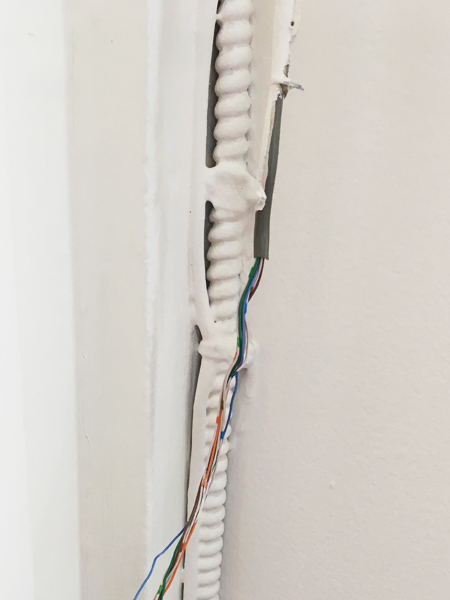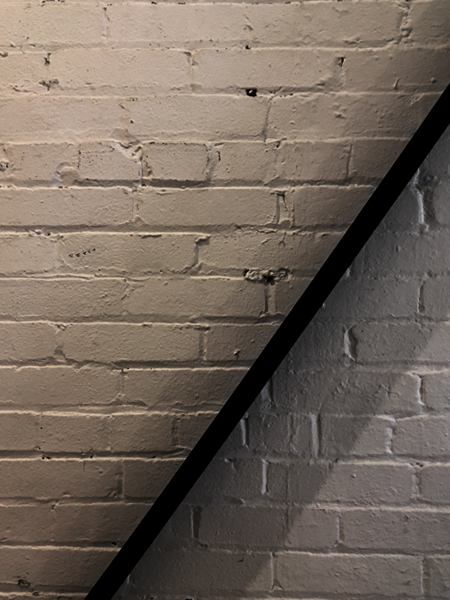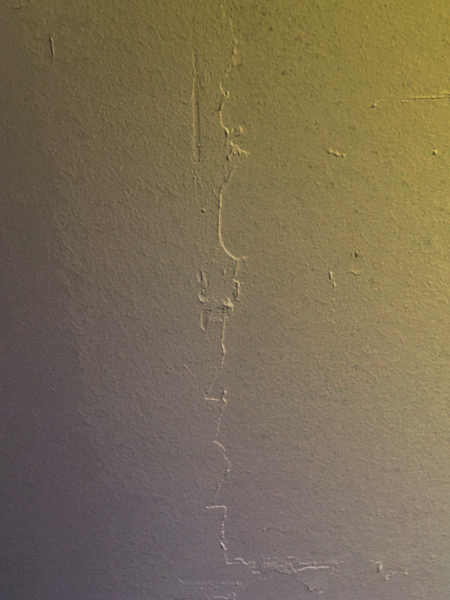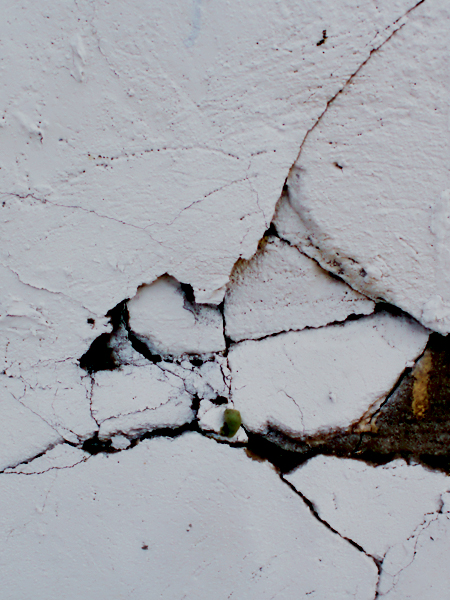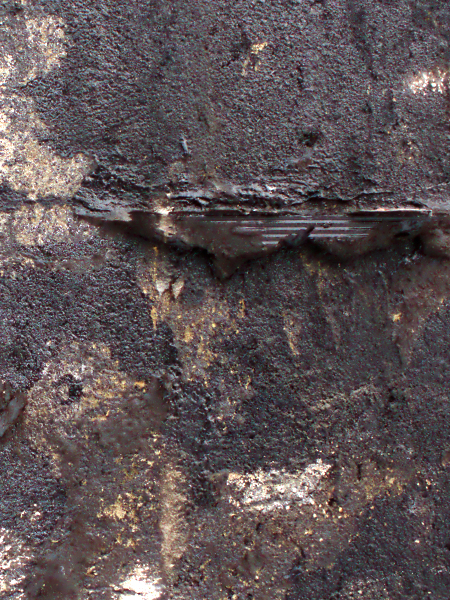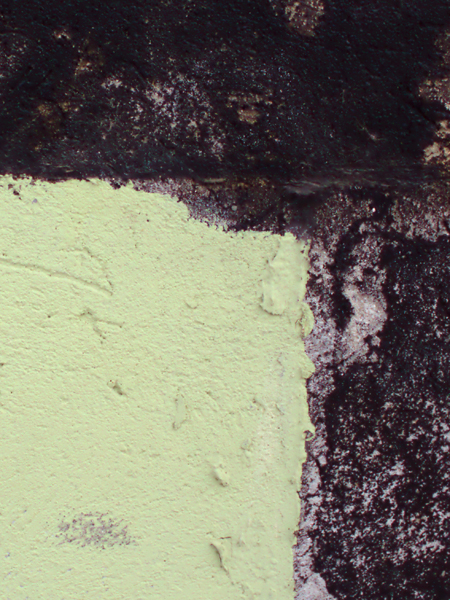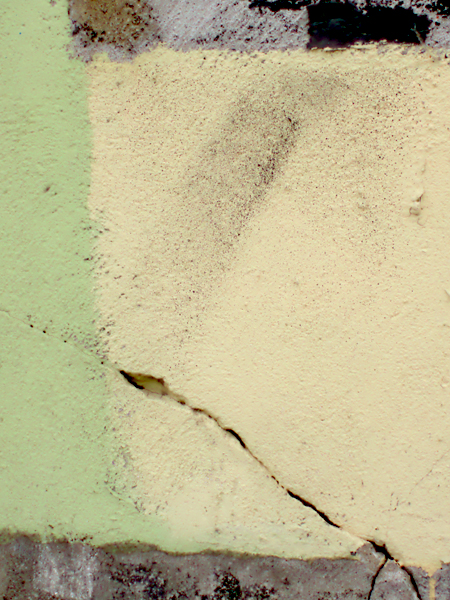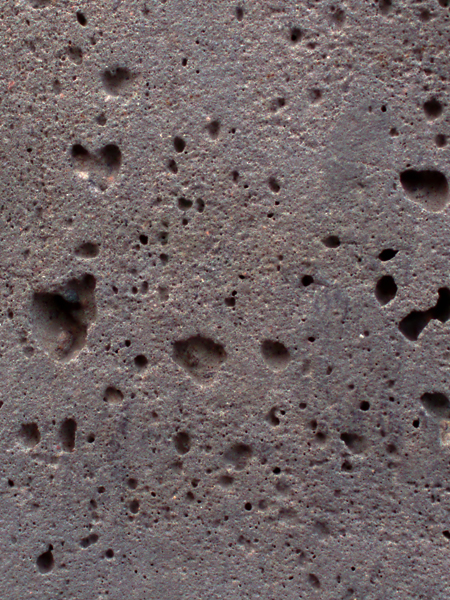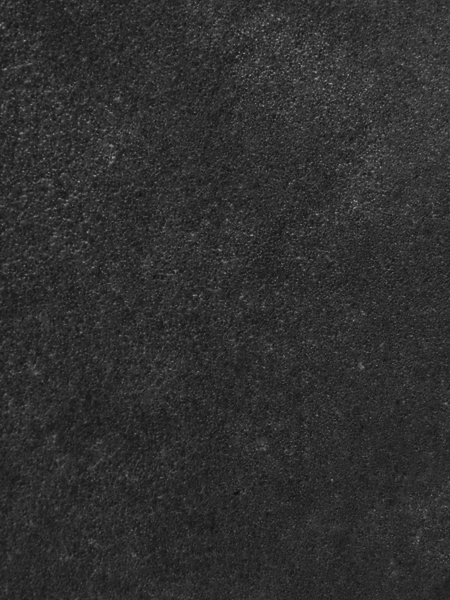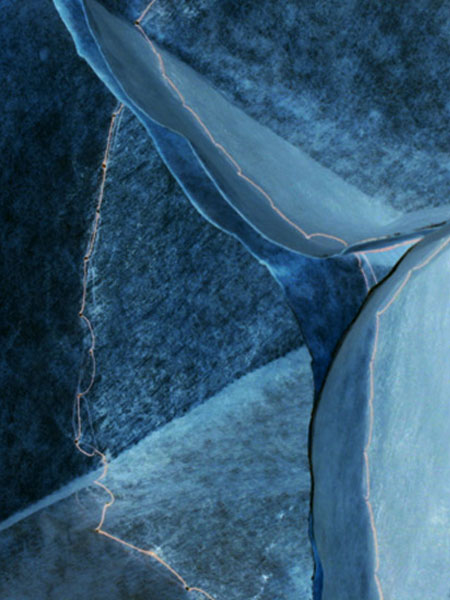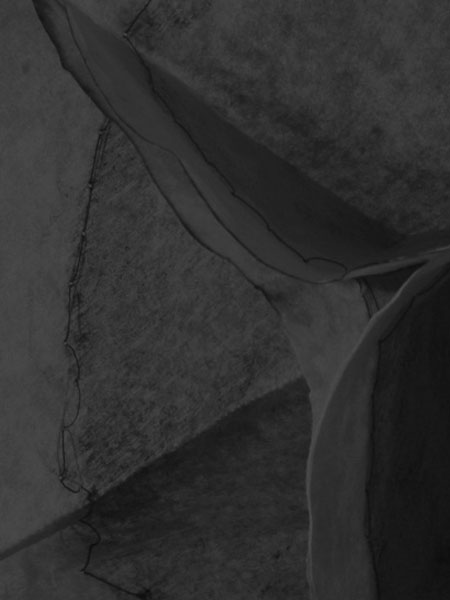Bulletin n°41
Preface
Coming soon
Carol-Ann Belzil-NormandIndex
Bulletin n°40
Preface
2017-2018 has been plentiful for LA CHAMBRE BLANCHE. In this bulletin, author Anne-Sophie Blanchet lets us discover the universe of the artists who passed through our centre. In September 2017, she met with Marco Casella who worked on the conception of a landscape destined to be heard, seen and imagined. While roaming the city, the artist translated the locations he visited into sounds in order to synthesize the urban space. For his part, Quelic Berga turned the gallery into a research laboratory. He worked to develop a rhizomatic film editing software from various real data. A similar interest for digital art data can be found in the work of Owen Chapman and Peter Sinclair. These two artists gathered their potential around the creation of a project focusing on mobility in urban areas. In collaboration with Seconde Nature’s Futur DiverCities project, a partnership between Europe and Quebec, they designed avatars inspired by the movement in the city of the various participants. During the Mois Multi, artist Pavitra Wickramasinghe has produced an installation reminiscent of the sea. She has crumpled, folded, and cut paper using various methods. The accumulation of paper objects in the gallery recalls the motion of the waves. The year ended with the installation of artist and activist Pan Wang during an exchange between Quebec and China. In LA CHAMBRE BLANCHE gallery, he exhibited the artefacts of a performance filmed on the Dufferin terrace. With his presence in such an emblematic and tourist sites of Quebec City, he wanted to underscore the inability to take such action in his own country.
Geneviève GasseIndex
Bulletin n°39
Preface
Coming soon
Jacqueline BouchardIndex
Bulletin n°38
Preface
LA CHAMBRE BLANCHE always proposes site-specific residencies based on the relationship between the artwork and the premises. From 2014 à 2016, faithful to this mode, four projects explored, furthermore, the sometimes troubled relationship of the individual with its environment.
In the fall of 2014, Nancy Samara Guzmán Fernández and Rodrigo Frías Becerra sneaked into the bureaucratic universe of the government employees scattered every day on the 31 floors of the Marie-Guyart office tower. The Mexican artists, weaving through the screens forming the work cubicles, brushing lightly some green plants that were expected to animate the decor frozen under artificial lighting. These plants, Not Wild, But Still Life, who could be seen in the windows, gave off a friendly impression of the building, but in reality, everything was ordered to keep workers in an environment foremost functional.
In 2015, the Transcultures exchange program Vice Versa wove a network of residencies between the Web, Quebec, and Mons. In that context, artists Alice Jarry (Montreal) and Vincent Evrard (Liege) were paired to conceive and build an installation inspired by diffraction that explored and “brought into light” this phenomenon with the help of glass, mechanisms, and electronic devices. According to the co-creators, Lighthouses is at once plastic, poetic and metaphorical, because the work reflects the process by which the light is deflected or diffused in beams of different colours when it encounters an obstacle: this process mirrors their work methodology, their material and what occurred in their collaboration and the premise of creation.
In 2015, also, the Canadian-Mexican Michelle Teran furthers her research on disturbances in the urban environment (previous residency in 2006). This time, moved by the issue of social housing and urban diversity, she explored downtown Quebec City. Five social organizations concerned with the same questions opened their doors to her. She shot videos documenting their activities, their mission and specific cases. These videos fed the discussion around the issues to which this “art sociologist” wants to raise public awareness.
Finally, in the spring of 2016 the Thai artist Jedsada Tangtrakulwong had to adjust to our persistent winter. Through his wanderings in the cold of the environment, he was fascinated to see how the City had designed a way to swaddle the trees to protect them. His installation, Adjust, reproduced in the gallery this manner to be creative in order to survive. Everything becomes a matter of adjustment, in art as in horticulture.
Jacqueline BouchardIndex
Bulletin n°37
Preface
The 37th issue of the Bulletin offers a critical look on the physical space of the residency, on the relationship the object sustains with sound and on the playful and performative dimension of video and film.
In the fall of 2012, Brazilian artist Karina Montenegro stages an intimate garden that chronicles her experience of the residency. The geometric sculptures cast a shadow on the wall, thus dislocating the relationship to the time and location inhabited by the artist and the visitors. For Miguel Monroy, the context of residency becomes a performative space and a mise en abîme. LA CHAMBRE BLANCHE’s team members and the artist intervene in the physical and video space in order to claim the material and intangible aspects of research. In 2013, Japanese artist So Kanno creates sound and visual phenomena with ingeniously manufactured objects. The hum and pulse are noticeable in the peculiar acoustics of the place. Subsequently, Bruno Caldas Vianna builds devices capturing images and time. He questions the camera obscura’s process by reconstructing the primitive optical instrument with digital tooling. In 2014, Croatian artist, Božidar Jurjević, first offers a retrospective of his performance work. Subsequently, he experiences the oppositions between the Mediterranean and Northen environments through visual and digital arts practices. During the same year, Montrealer Emmanuel Lagrange Paquet explores cinema in a playful and interactive perspective. For Jurjević, the performative aspect of the work is held up by the artist while for Lagrange Paquet, it is the visitors who are invited to perform the work through a playful device hailing from video games. The notion of performances takes a meaning differentiated from the body with the use of new technologies.
The 2012-2014 programming opening on sound, space, body and object marks once more the critical input of LA CHAMBRE BLANCHE in the art community both locally and on the international scene.
Carol-Ann Belzil-NormandIndex
Bulletin n°36
Preface
In this 36th issue of the Bulletin, the four selected artists have transformed LA CHAMBRE BLANCHE’s environment through various landscapes and ambiance. The season kicks off with artist Camporesi who’s interested by the nature crisscrossing Quebec City. The landscapes that she presents take various shapes which juxtapose nature to digital technology.
The temporality of the employed mediums (the set time as well as the time of the filmed sequence) reveals panoramas complexified by the transformation imposed by the artist.
The notion of temporality is also present in Pablo Rasgado’s work, the second artist presented here. He explains in a short video the research he has undertaken to ‘’extract the ghosts from the past’’, the archives and the artist centre’s walls. Author Dominique Lepage transports us into a reflection on the artist’s experience within the walls of the gallery. Her thinking addresses the way in which the artist uses the walls that become the artifacts of old exhibitions, thus revealing the past through recovered traces. It speaks of a temporal presence, linked to the history and memory of the place.
Takao Minami meanwhile invites us inside a road movie staging his own reality of the walker roaming Christophe-Colomb’s street along LA CHAMBRE BLANCHE. He takes us walking on this street, thus forcing the video to embrace his gait, his rhythm like music.
Through various film referents, author Guillaume Lafleur questions us on the relationship sustain with the territory we cross, conjuring up the superpositions of the route travelled by the artist.
To conclude this bulletin, the interview of Marc Dulude by Pascale Bédard allows us to glimpse the mind space of the artist. We meet his vision of art and creation.
We enter a state of mind where the production and reflection time gather in a single location; the experimental workshop put in place by the artist during his residency.
Geneviève GasseIndex
Bulletin n°35
Preface
To be part of the world – to inhabit our precarious contingencies.
We are made up of what we see, of the locations we inhabit, frequent or invent. While the current world contributes to convince us that all is finitude rather than open and plural potentials, the artists of the 35th issue of LA CHAMBRE BLANCHE’s Bulletins are aware that the spaces that surround us shape us and implement our poetic thought.
While staying in Quebec City, Paolo Angelosanto inhabits the residency in a modular fashion, approaching creation as a suite of connected vessels that leading him between performance, sculpture and installation. Armando García draws the momentum to act in other forms of bewitchment : the creation residency out of his native Mexico, the crossing of new environmental, political and social climates, and new emotional territories.
To shake the completeness of our narrowly focused world, we can try like Raphaëlle de Groot, to feel the weight of the objects that make up our world, collecting artifacts and gathering a sensitive inventory. An astonishing dialogue between the material and the immaterial also crosses Jonathan Villeneuve’s resonant installation produced at LA CHAMBRE BLANCHE.
We stand before the plurality of these proposals as we would in before a multitude of floating worlds bringing us to the confines of an imaginary boundary: disorientation and geographic reliefs, improbable and intimate mapping and a variegated inventory of artifacts.
So many micro-worlds pregnant with poetry, inviting us to revisit our view on reality.
Cynthia FecteauIndex
Bulletin n°34
Preface
Food for Thoughts
Materiality in its essence and its sense are at the centre of the concerns of the three artists presented in this bulletin, who use it for purposes of symbolization. It is apparent in the effects of subtraction and transformation of the wood of John Cornu’s installation, who’s work at LA CHAMBRE BLANCHE took place in the carpentry workshop before taking form in the gallery. His works occupied two different spaces, in one of them a sculpture which conveys the contemporary idea of ruin and destruction and in the other, a tribute to sculptor Pierre Paquin who became blind and with whom he discusses and exchanges regularly. Author Emma-Charlotte Gobry-Laurencin broaches the work entitled Je tuerai le pianiste by posing the question, is the work: “an expression of the present, an answer to reality, a sample-document witnessing this showbiz society, or an indexed structure specific to our time?” The disappearance of the matter is also perceptible in the work of Sarla Voyer, the second artist in residency this fall. She reproduced her hometown, Quebec City, using glass objects picked in various locations. The exhibition photographs give the impression that there is almost no matter or a blurred matter blending in the context and that reveals the interior of a transparent world, creating an atmosphere of intimacy and fragility. In her text about this artist’s work, author Marie-Hélène Leblanc names ‘’Maison-mère’’ (Mother house) this impression of the mother impulse that is part of the artist’s quest and reflection. To complete this bulletin, we can see the emerging artist Stefane Perraud’s dreamlike universe that pores over the idea of human frailty. Eli Commins’s text expresses well the ambience in which the artist plunges us. He draws inspiration from Didi-Huberman’s book La survivance des lucioles. The artist invites us to observe a nocturnal world by unfolding in space a light sculpture representing a swarm of fireflies, whose illuminations conjure up for him an entire social group with its hopes, its fragility.
Geneviève GasseIndex
Bulletin n°33
Preface
In 2008-2009, themes seem to resound from one residency to the other although in very different spheres such as: music, displacement, traces and colours. Erick d’Orion first takes us in the confusing course of his Forêt d’Ifs, a sound and visual “hyperfluxienne” experience. The deafening location, visually frightening, falls more under the scope of a nightmare than reverie.
It is instead Mamoru Okuno’s sensitivity and refinement of gesture of that bends our ear to the simple music of our daily lives. Through relational rituals, the artist manipulates banal objects of everyday life on which he draws our attention to let us hear their language.
Both meditative and open to the location, both physical and metaphysical, James Geurts’ artwork is crisscrossed by the fluidity and the transience of its devices and forms, as so many narratives about travelling, water and human encounters generated by the art space.
The Unfinished Tour Québec City again addresses the question of displacement, but of a different nature. Here, it is Gabriela Vainsencher’s displacement in relation with the art of the Other and the residency environment, but also the displacement of points of view brought on by her drawings that can be considered as ‘’illusionist projections’’ or as the traces of her experience left on the outside world. Other traces are offered by Antonello Curcio’s À hauteur du regard. His installation celebrates the materiality modulations of white . An algorithm unfolds on the walls, comprising the entire space of the gallery : sometimes three-dimensional, sometimes two-dimensional, his monochromatic squares follow one another as the result of meticulous interventions of scraping, incisions, pigment and graphite applications.
Through the energetic impulse of red, it is still the question of the colour vibration that is addressed in Robbin Deyo’s Flow. Red lines on a white backdrop follow one another, inhaling and exhaling on the walls, to the point of hallucination.
Jacqueline BouchardIndex
Bulletin n°32
Preface
Michel Certeau’s concept of the “the practice of space” find its relevance in LA CHAMBRE BLANCHE’s 2007-2008 season. It is indeed question of constructive moves and perceptual reversals, in a space that was successively broken, ritualized, fleeing, naturalized and updated during the five residencies that followed one another, each requiring a different posture on the part of the viewers who “practice” the space through the artworks.
Fnoune Taha throws a philosophical light on Virginia Medeiros’ approach. The Brazilian artist’s artwork À contre-sens covers the transgression of gender and social class. Videos shot in an underprivileged area of Salvador, show the diverted paths of two marginal, Simone and Preta.
Jean-Pierre Guay chronicles Gabriela Garcia-Luna’s last voyage, Universos relativos, true rite of passage in three steps by which the Mexican artist approaches the death of his father. It is a matter of suspending time to reach somewhere else by crossing the present reality.
With Possible Worlds, a sort of construction site, artist Erik Olofsen seeks to deconstruct our perception of space. Annie Hudon Laroche underlines how the artist realizes constantly ‘fleeting’ spaces, between fiction and reality, through ‘’ mises en abyme’’, duplication and juxtapositions.
In Ivana Adaime Makac’s Le banquet, plant sculptures under glass domes are animated by the chirping of crickets: six enclosed spaces doubling back on the slow pace of small worlds, combining life and death, summoning, “the delicious or the abject’’. In his text, Denis Lessard recalls the relation between insects and creation.
Sébastien Hudon covers Exils intérieurs from Belgium artist Els Vanden Meersch. In the exhibition room in a sort of black bunker, photographs of empty interiors both strange and familiar, instill an unstoppable anguish: their icy austerity evokes the barren rigidity of totalitarianism.
Jacqueline BouchardIndex
Bulletin n°31
Preface
This 31rst issue of LA CHAMBRE BLANCHE’s Bulletin holds the trace of artists sensitive to their experience throughout various spaces. The development of works produced in 2006-2007 has been enhanced by meetings, discussions and collaborations which gave rise to discussions regarding locations where human lives, as well as the context in which he evolves.
These explorations on spatiality take form in various proposals. At first, the universe of the artist’s studio, its specific temporality and the type of actions taken in this location were explored. A Mexican artist turned his attention to the spaces of daily life and to man’s relation to the residual waste he yields. Sound performances inspired by artworks hailing from the Renting a work of art program (CPOA) of Musée National des Beaux-arts de Québec (MNBAQ) took place within the walls of LA CHAMBRE BLANCHE’ gallery, and then at the MNBAQ.
The great uninhabited outdoors where natural disasters arise were the subject of installations and performances that took a look at the mechanisms society uses to show us these phenomena. In a rather grandiose manner, the exhibition space was remodeled using three-dimensional shapes built in plywood, thus challenging the viewer in his understanding of the space and the object.
To conclude, it was question of urban space and the strategies human use so that its environment responds more effectively possible to his hectic lifestyle.
On the part of LA CHAMBRE BLANCHE’s collective, I wish you good reading.
Camille Bernard-GravelIndex
Bulletin n°30
Preface
For this 30th issue of the Bulletins, LA CHAMBRE BLANCHE initiates a major shift in the dissemination and archiving of its activities. In order to be opened to the multiple possibilities of digital, this issue and the following are now available on a web platform, fed by dozens of authors hailing from a wide horizon of practices, areas of thought and creation. LA CHAMBRE BLANCHE wishes to expand its readership and facilitate access to its contents through mobile terminals and virtual channels. This recent innovation is also an invitation to experiment and reflect on the wide spectrum of labourers who work in the culture of exchange.1 At the heart of the digital texts, there are now links to videos and sound art works available for listening: kinds of sensitive landmarks and places of sharing that allow us to better feel the density of objects and artworks that occupied the exhibition space of the centre, or that were conceived in it. With this new digital turning point, the Bulletins objectify this inner necessity to depict the world in the form of a sensitive inventory, to circumscribe it in every minute detail of the objects and familiar places that we cross, as if to steady our footing.
It is, moreover, this idea of the materiality of media that is referred to in Maxime McKinley’s text William Engalen : Verstrijken. Introduced by a sound work taken from a Verstrijken concert with Caroline Béchard, Annie Morrier and Suzanne Villeneuve, presented at LA CHAMBRE BLANCHE on Friday, November 11, 2005, his text highlights the multiple crossovers between visual arts, music and architecture in the Dutch artist’s approach. The rich network of heterogeneous references linked by the author reflects the artist’s conceptual and methodological nomadism. We also find this hybrid and nomadic form in Arzapalo’s project, presented from October 18 to December 18, 2005. In this regard, Jean-François Côté brings us to reflect on the network of architectural and political metaphors fed by the City’s and LA CHAMBRE BLANCHE spaces, in Arzapalo’s photographic work. Closely following this, a text by Marie-Lucie Crépeau describes a corresponding dialogue between the artist and the City, that lies at the heart of Brazilian Frederico Câmara, in residency in January and February 2006. Driven by the winter environment of Quebec, francophone city, Câmara took the opportunity of his stay to feed his reflections on the way which he himself as well as people make up and perceive their natural, cultural and social environment. In Zone audio temporaire, Hélène Matte highlights for her part the intangible nature of Daniel Joliffe and Kristen Roos’s audio installation. The author talks about these works composed of sounds gleaned in the City’s heart, in parks and close by bars, through interviews of the St-Roch’s dwellers, a neighbourhood roamed by artists. In LA CHAMBRE BLANCHE’s gallery, the sound installation allows us to think and live differently the experience of listening to the city.
It introduces us to new intangible territoriality which crosses through these locations that we frequent on a daily basis.
With their power of suggestion, the artefacts that make them up and their various ways of occupying the space, the projects discussed in this 30th Bulletin offer an unambiguous lack of sense. They revive this larger level of consciousness where spaces are experienced as indissoluble multiplicities expanses.
- Cauquelin, Anne. 2006, Fréquenter les Incorporels: contribution à une théorie de l’art contemporain. Paris : PUF, Coll. Lignes d’art. p. 90.
